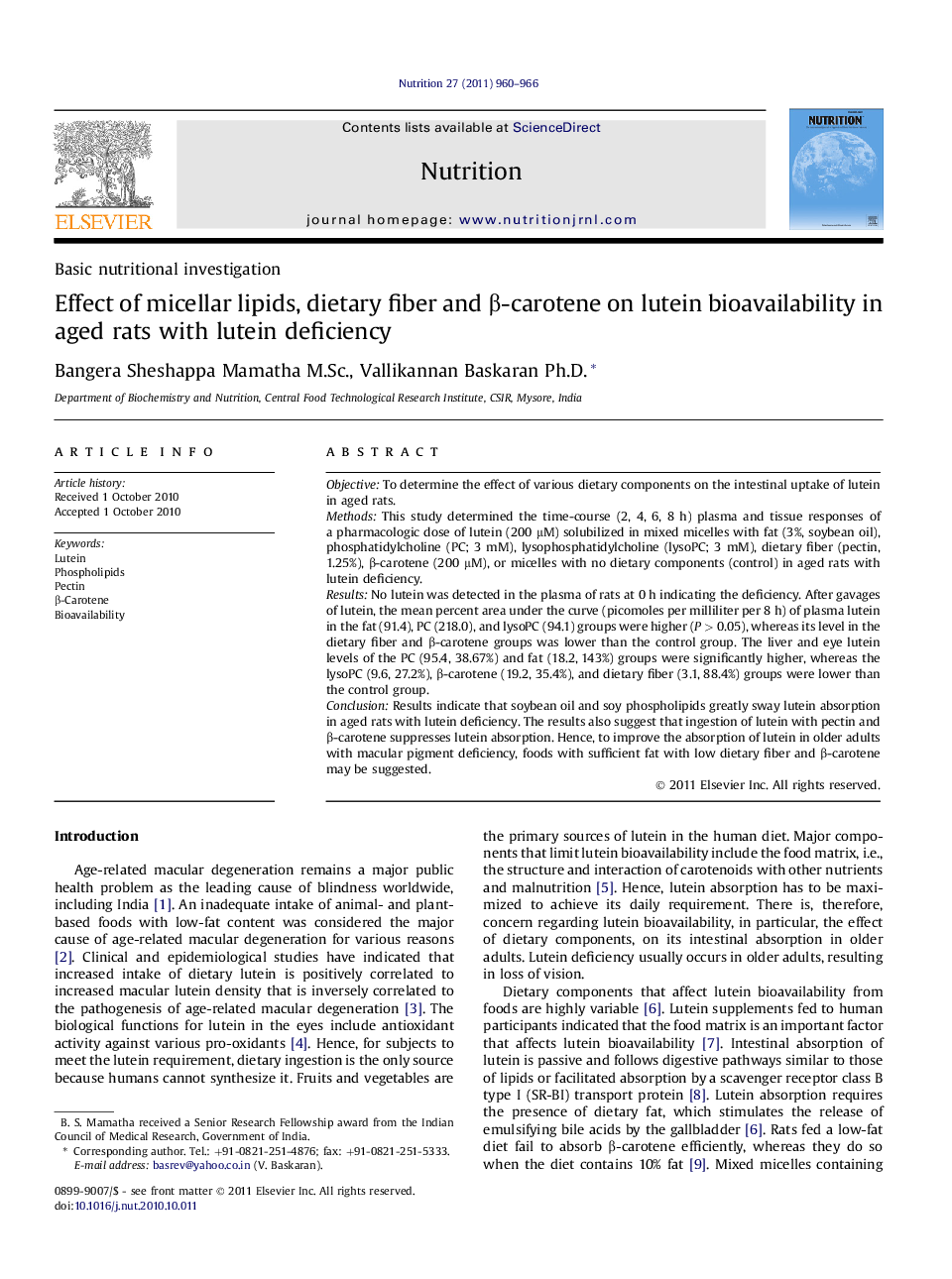| Article ID | Journal | Published Year | Pages | File Type |
|---|---|---|---|---|
| 3276662 | Nutrition | 2011 | 7 Pages |
ObjectiveTo determine the effect of various dietary components on the intestinal uptake of lutein in aged rats.MethodsThis study determined the time-course (2, 4, 6, 8 h) plasma and tissue responses of a pharmacologic dose of lutein (200 μM) solubilized in mixed micelles with fat (3%, soybean oil), phosphatidylcholine (PC; 3 mM), lysophosphatidylcholine (lysoPC; 3 mM), dietary fiber (pectin, 1.25%), β-carotene (200 μM), or micelles with no dietary components (control) in aged rats with lutein deficiency.ResultsNo lutein was detected in the plasma of rats at 0 h indicating the deficiency. After gavages of lutein, the mean percent area under the curve (picomoles per milliliter per 8 h) of plasma lutein in the fat (91.4), PC (218.0), and lysoPC (94.1) groups were higher (P > 0.05), whereas its level in the dietary fiber and β-carotene groups was lower than the control group. The liver and eye lutein levels of the PC (95.4, 38.67%) and fat (18.2, 143%) groups were significantly higher, whereas the lysoPC (9.6, 27.2%), β-carotene (19.2, 35.4%), and dietary fiber (3.1, 88.4%) groups were lower than the control group.ConclusionResults indicate that soybean oil and soy phospholipids greatly sway lutein absorption in aged rats with lutein deficiency. The results also suggest that ingestion of lutein with pectin and β-carotene suppresses lutein absorption. Hence, to improve the absorption of lutein in older adults with macular pigment deficiency, foods with sufficient fat with low dietary fiber and β-carotene may be suggested.
